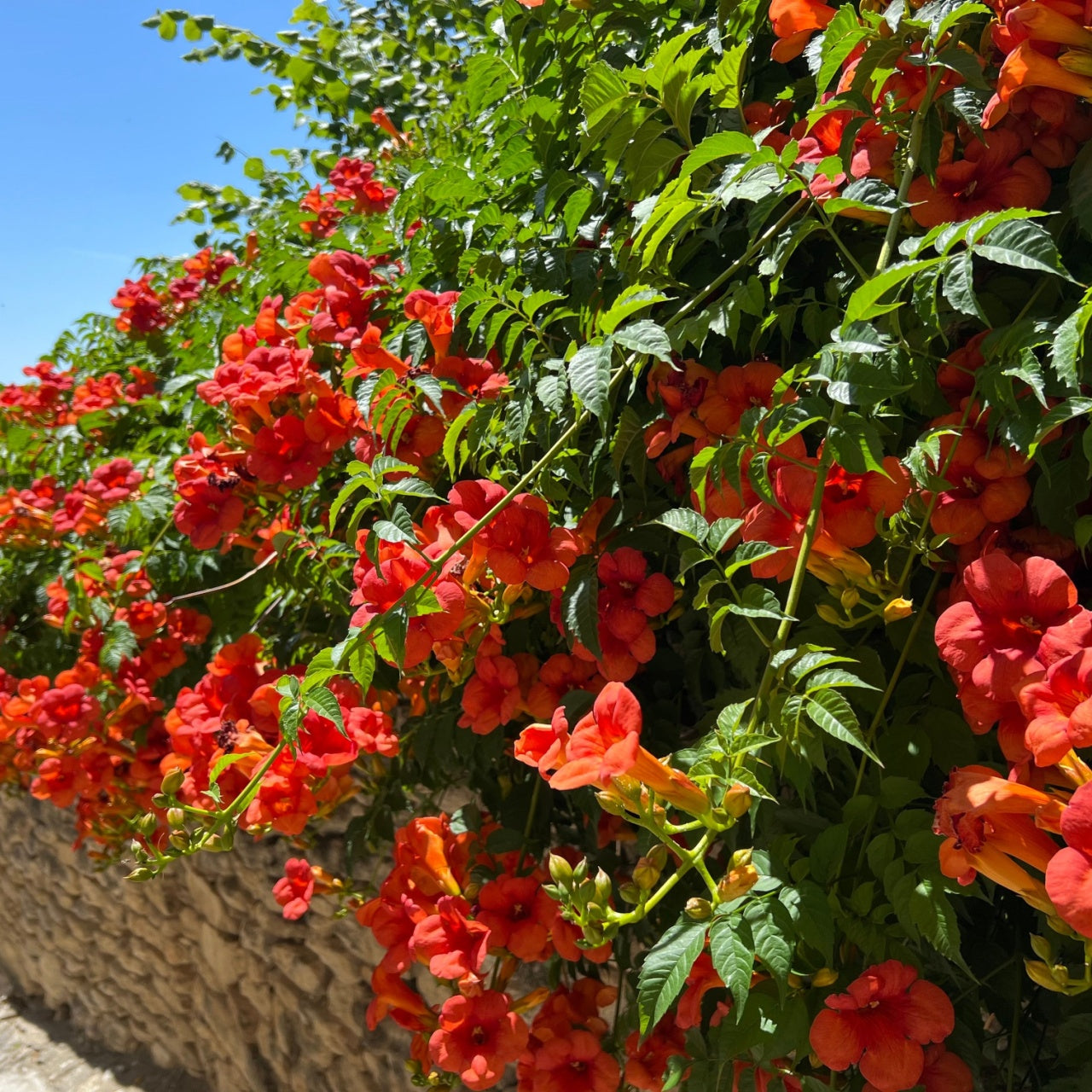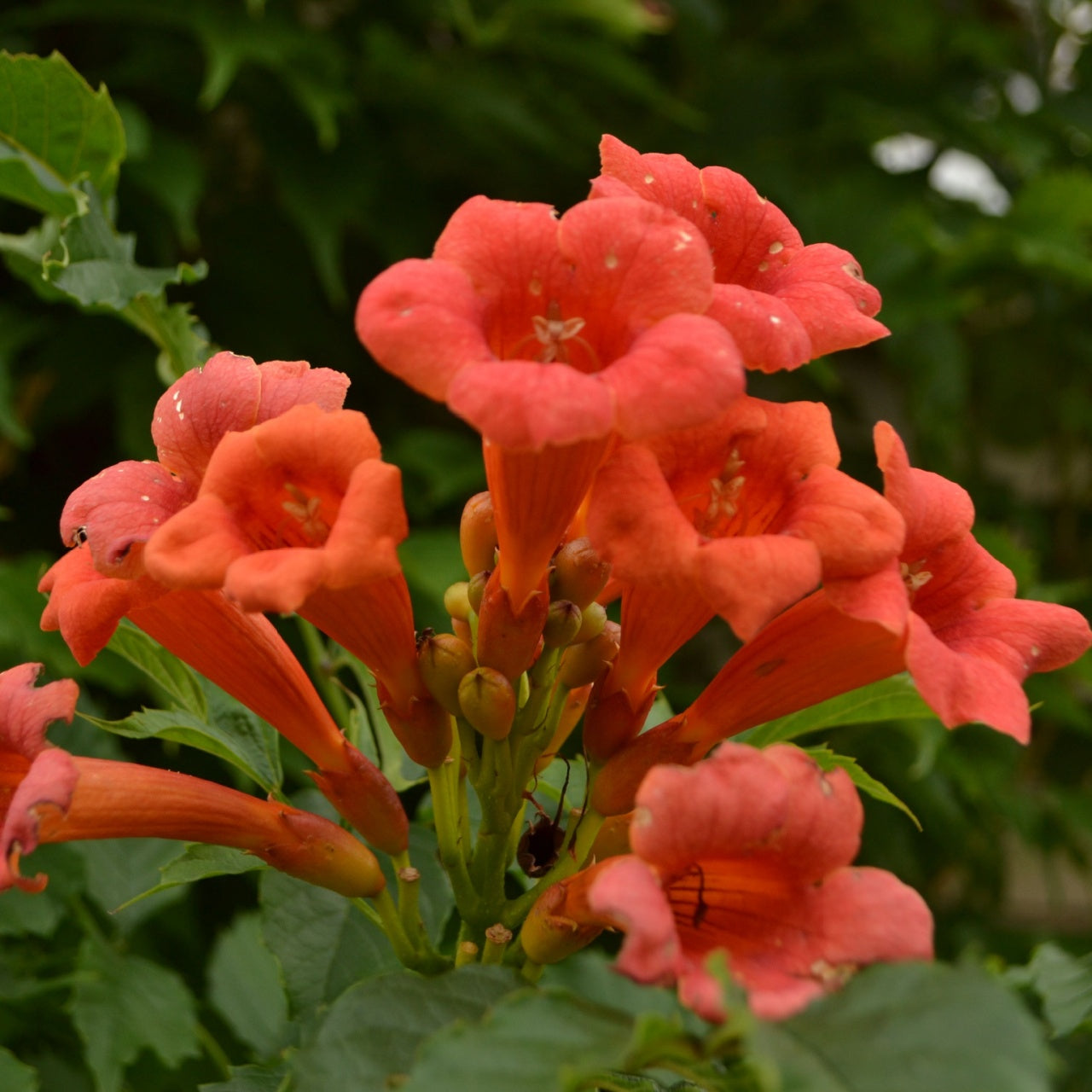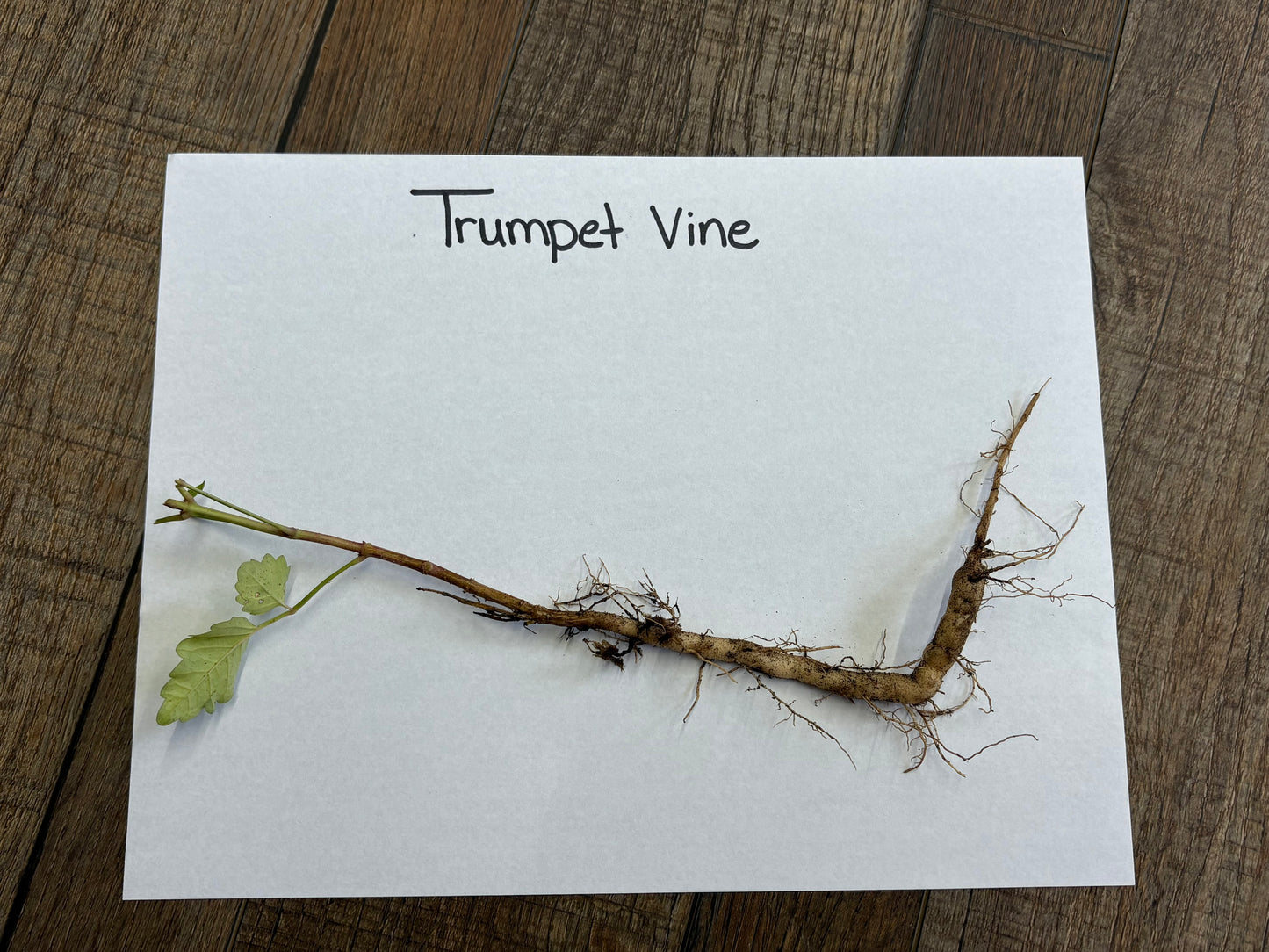Apr 10, 2025 min read
Do you need an evergreen hedge or privacy border year-round by your home to promote privacy around your pool and play...
Read More about Best Privacy Evergreen Trees



Removes & Absorbs Toxins
Improves Air Quality
Low maintenance & easy to grow
Trumpet Creeper Plants (Hummingbird Vine) is a climbing plant whose flowers are pollinated by hummingbirds. If you plan to plant it in your yard, be prepared to see hummingbirds daily throughout the summer. It grows relatively quickly. While beautiful all year round with their spiky seed pods and star-shaped leaves, these trees are incredibly gorgeous in the fall when they turn stunning shades of purple, pink, orange, and yellow.
The specific shape of the flowers is meant to keep the rich nectar out of reach of most insects and birds, except bees and hummingbirds. Although both hummingbirds and bees are their primary pollinators, hummingbirds appear to get most of the attention. Its flowers perfectly accommodate the hummingbirds' long-probing tongues and slender beaks. Every time the bird sticks its small head into a flower, it pollinates the next flower that attracts it. The flowers are ideal for attracting numerous hummingbirds to the general landscape.
They will bloom throughout the summer and early fall, although shady areas may not bloom as well as sunlight areas. After they flower, the vines produce pretty seedpods similar to beans.
They are straightforward in growing and thriving in the sun and semi-shade. Even though it prefers good, well-draining soil, the flowers are resilient and flexible enough to adjust to virtually any kind of soil and will readily grow. Take care not to plant them too close to your home since the creeping roots can work their way under your home's shingles and cause significant damage to the foundation.
The trumpet creeper (hummingbird Vine) plants don't require fertilizer and should only be watered as needed since they tend to grow rather vigorously. Once established, they are virtually maintenance-free for the most part. However, minimal maintenance does involve pruning them from time to time. Pruning them regularly keeps them under control. Pruning should be done once a year, preferably in the spring, and can be clipped back to only a few buds for great results.
This Is How Your Plants Will Look upon Delivery
Bloom Season
Bloom/Foliage Color
Orange
Shipping date depends on the date displayed and chosen when you order from the product's page.
We do not offer warranties on products after 5 days past receiving your plants.
Our Blogs
By signing up, you agree with our privacy policy.